|
80x5 -
240x3 -
240x4 -
320x1 -
320x2 -
320x3 -
640x1 -
640x2
Set display option above.
Click on
images to enlarge. |
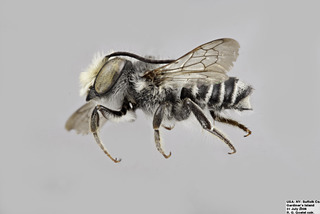
© Copyright Laurence Packer 2014
· 7
Megachile petulans MALE comp |
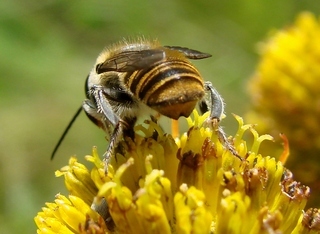
© Copyright John Ascher, 2006-2014
· 6
Megachile petulans, at least sensu auct., leaf-cutter bee |
|
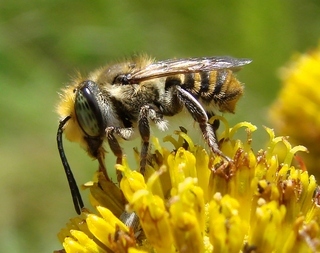
© Copyright John Ascher, 2006-2014
· 6
Megachile petulans, at least sensu auct., leaf-cutter bee |
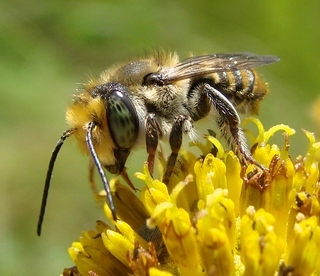
© Copyright John Ascher, 2006-2014
· 6
Megachile petulans, at least sensu auct., leaf-cutter bee |
|
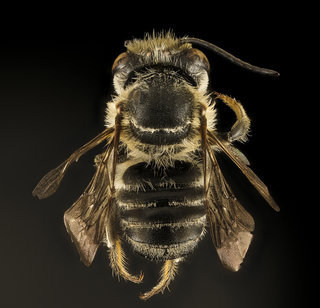
© Copyright source/photographer
· 5
Megachile petulans, M, back, Dorchester Co, MD |
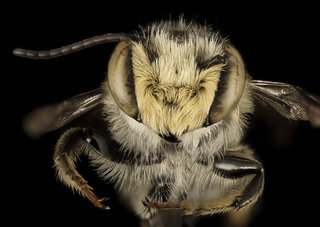
© Copyright source/photographer
· 5
Megachile petulans, M, face, Dorchester Co, MD |
|
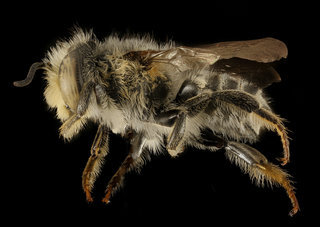
© Copyright source/photographer
· 5
Megachile petulans, M, side, Dorchester Co, MD |
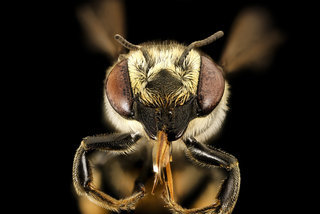
© Copyright source/photographer
· 5
Megachile petulans, f, face, Charleston Co., SC |
|
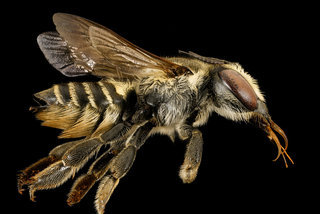
© Copyright source/photographer
· 5
Megachile petulans, f, left side, Charleston Co., SC |
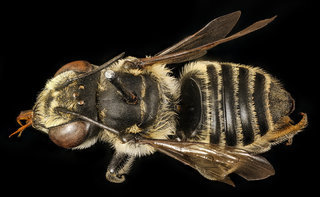
© Copyright source/photographer
· 5
Megachile petulans, f, back, Charleston Co., SC |
|
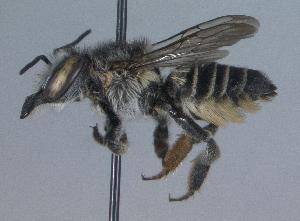
Barcode of Life Data Systems · 1
Megachile petulans, Barcode of Life Data Systems |
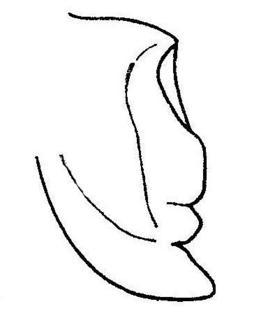
© NC Agriculture State Experiment Station Technical Bulletin Number 152, T. B. Mitchell, 1962
· 1
Megachile petulans, female, mandibles |
|
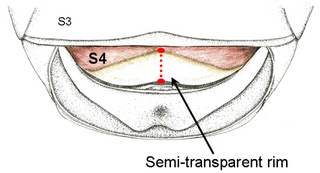
© Rebekah Andrus Nelson
· 1
Megachile petulans, male, S4 |
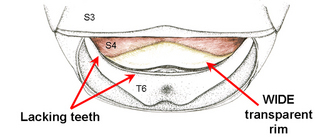
© Rebekah Andrus Nelson
· 1
Megachile petulans, male, T6 and S4 |
|
Overview |
Reprinted with permission from: Mitchell, T.B. 1962 Bees of the Eastern United States. North Carolina Agricultural Experiment Station Technical Bulletin No. 152.
FEMALE—Length 11-12 mm.; entirely black, including tegulae and legs, spurs pale yellow; eyes very slightly convergent below; dy-peal margin about straight, with a very slight, median, raised tubercle which does not protrude beyond the margin; mandibles broad apically, obscurely 4-dentate, median teeth low and very broadly truncate, a bevelled edge between the median and inner teeth (fig. 51); lateral ocelli considerably nearer margin of vertex than to eyes; cheeks distinctly narrower than eyes, subcarinate posteriorly; punctures of vertex quite deep and distinct, rather coarse, close medially, becoming well separated or almost sparse toward eyes, very minute, close and hardly distinguishable on cheeks above, becoming somewhat more irregular and more widely spaced below; face below ocelli densely rugoso-punctate, very finely so at sides, supraclypeal area and clypeus with a median, impunctate, polished space, becoming closely and rather finely punctate on each side; pubescence whitish, rather short but copious around antennae, sides of face and on cheeks below, intermixed with fuscous between antennae, largely black around ocelli and across vertex; pubescence of thorax rather short, but dense, entirely whitish laterally and posteriorly, scutum and scutellum with short, thin, erect, blackish pubescence, becoming pale anteriorly on scutum, the scutello-mesothoracic suture with some rather obscure, pale tomentum; punctures of scutum fine and densely crowded
large part, slightly separated in center posteriorly-, median punctures of scutellum quite distinct but somewhat finer, becoming
very fine and densely crowded laterally and
on axillae; pleura dull, with fine and close
punctures, somewhat coarser below but becomsiderably
ing fine and densely crowded above; propodeum somewhat shining, very minutely andobscurely punctate, punctures somewhat closer on posterior face; mid and hind basitarsi about as broad and nearly as long as their tibiae; mid tibial spur rather short but distinct; tegulae shining, with only exceedingly minute, barely visible punctures; wings sub-hyaline, veins brownish-piceous; terga 2-5 slightly depressed toward base, basal margin of the depression distinct but hardly carinate, apical margins of terga hardly depressed but very narrowly and completely whitish fasciate, tergum 1 with rather copious, erect, whitish pubescence which is quite dense at sides, discal pubescence of 2-5 very short but rather dense, entirely black; punctures of terga very fine and close throughout; tergum 6 nearly straight in profile, with abundant, erect, black hairs visible, with some very fine, appressed, pale tomentum partially obscuring surface, punctures very fine and densely crowded throughout; sternum 6 with scopal hairs across basal half but bare apically, apical margin protruding slightly but very inconspicuously beyond the dense, subapical fringe of short, dark hairs; scopa yellowish-white throughout, sternal plates very finely and densely punctate on the more basal sterna, somewhat coarser apically, apical margins yellowish-hyaline; sternal fasciae not evident.
MALE—Length 9-10 mm.; black, legs dark in general but the more apical tarsal segments becoming brownish-testaceous, spurs pale yellow, tegulae brownish-testaceous; eyes rather strongly convergent below; clypeal margin slightly produced medially, this area very shallowly incurved beneath dense pubescence; mandibles 3-dentate (fig. 51), with a rather slender and acute, basal, inferior process; apical segment of flagellum slender and elongate; lateral ocelli considerably nearer margin of vertex than to eyes; cheeks considerably narrower than eyes, subcarinate posteriorly; punctures of vertex deep and distinct, rather fine and close medially, becoming somewhat more widely separated and slightly coarser laterally, cheeks minutely and closely punctate; surface of face beneath dense pubescence below ocelli very densely and finely rugose, clypeus more distinctly, but rather closely and rather finely punctate; pubescence of face copious and elongate, pale yellow, that on vertex largely fuscous, long and erect but thinner, short and more whitish on cheeks, becoming quite elongate below; venter of thorax more whitish pubescent, pleura and propodeum pale yellowish, scutum and scutellum with erect, rather elongate, fuscous hairs intermixed with some shorter, pale hairs, the scutello-mesothoracic suture rather densely pale tomentose; scutum rather coarsely punctate, punctures slightly separated in center, becoming very close laterally and posteriorly,
those on scutellum somewhat finer, very close throughout, densely crowded on axillae; pleura closely punctate throughout, punctures somewhat more distinct and coarse below, becoming densely crowded above, propodeum somewhat shining but minutely and quite closely punctate, posterior face with more sparse, minute punctures; front coxal spines well developed, rather narrow and narrowly rounded at tip, somewhat spatulate, densely pubescent posteriorly, and coxae with thin, sparse, elongate pubescence anteriorly, without any red bristles; anterior tarsi entirely slender and simple, the more apical segments testaceous, posterior fringe very short and inconspicuous; mid tibial spur very short but distinct; tegulae minutely and quite closely punctate; wings subhyaline, veins more brownish-testaceous; abdominal terga 2-4 rather deeply depressed across base, basal margin of depression quite definitely carinate, apical margins of terga somewhat depressed laterally, that on 4 depressed across entire plate, quite deeply so laterally; punctures very fine and close on the more basal terga, becoming more coarse and distinct apically, 2 and 3 very thinly white fasciate medially, becoming dense laterally, 1 and 2 with rather copious, elongate, whitish pubescence, discal pubescence of following terga becoming blackish toward apical rims, pale at base, 4 with a rather narrow but distinct, transverse, basal fascia, apical fascia broadly interrupted medially; tergum 5 with a faint, median ridge, broadly pale tomentose over most of disc, apical margin very abruptly and deeply depressed but not fasciate, disc with some erect, black hairs apically; tergum 6 densely whitish tomentose throughout, entirely hiding surface, punctures very fine and densely crowded beneath, carina rather low, somewhat produced on each side of a rounded, median, emargination, median apical teeth very low, hardly recognizable, lateral teeth very low but quite distinct; tergum 7 very short, largely hidden; sterna 1-4 exposed, quite closely and deeply punctate, apical margins yellowish-hyaline, those of 2 and 3 very abruptly and deeply depressed, margin of disc before the rim considerably elevated, conspicuously fringed with elongate, pale hairs, hyaline rim of 4 not depressed, very broad, shallowly emarginate medially; setose area of sternum 5 very broad, rather short, setae fine, unmodified (fig. 52); sternum 6 without setose areas, being largely bare, apical lobe broad and short, subtruncate, lateral angles rounded; gonocoxities obliquely compressed medially, abruptly flexed laterally toward apex, with an inner subapical protuberance, setose on inner side apically (fig. 55).
DISTRIBUTION — North Dakota to Mexico, east to New Jersey and Florida,
May to September except in Florida where it is in flight through most of the year.
FLOWER RECORDS — Apocynum, Asclepias, Aster, Bidens, Chamaeerista, Flaveria, Galactia, Helenium, Helianthus, Hydrolea, Hypericum, Hyptis, hex, Koellia, Lespedeza, Liatris, Melilotus, Phaseolus, Polygonum, Rhodendron, Rhus, Rubus, Solidago, Tephrosia, Trifolium, Vernonia and Vicia. Robertson (1929) records this species also on Achillea, Blephilia, Braunerici, Cam panula, Cassia, Cephalanthus, Cicuta, Coreopsis, Desmodium, Eryngium, Lobelia, Ludvigia, Lycopus, Lythrum, Nepeta, Pastinaca, Psoralea, Rudbeckia, Silphium, Strophostyles, Verbena and Verbesina.
|
|
|
Names | |
|
|
| Supported by | |
Updated: 2024-04-25 09:39:50 gmt
|